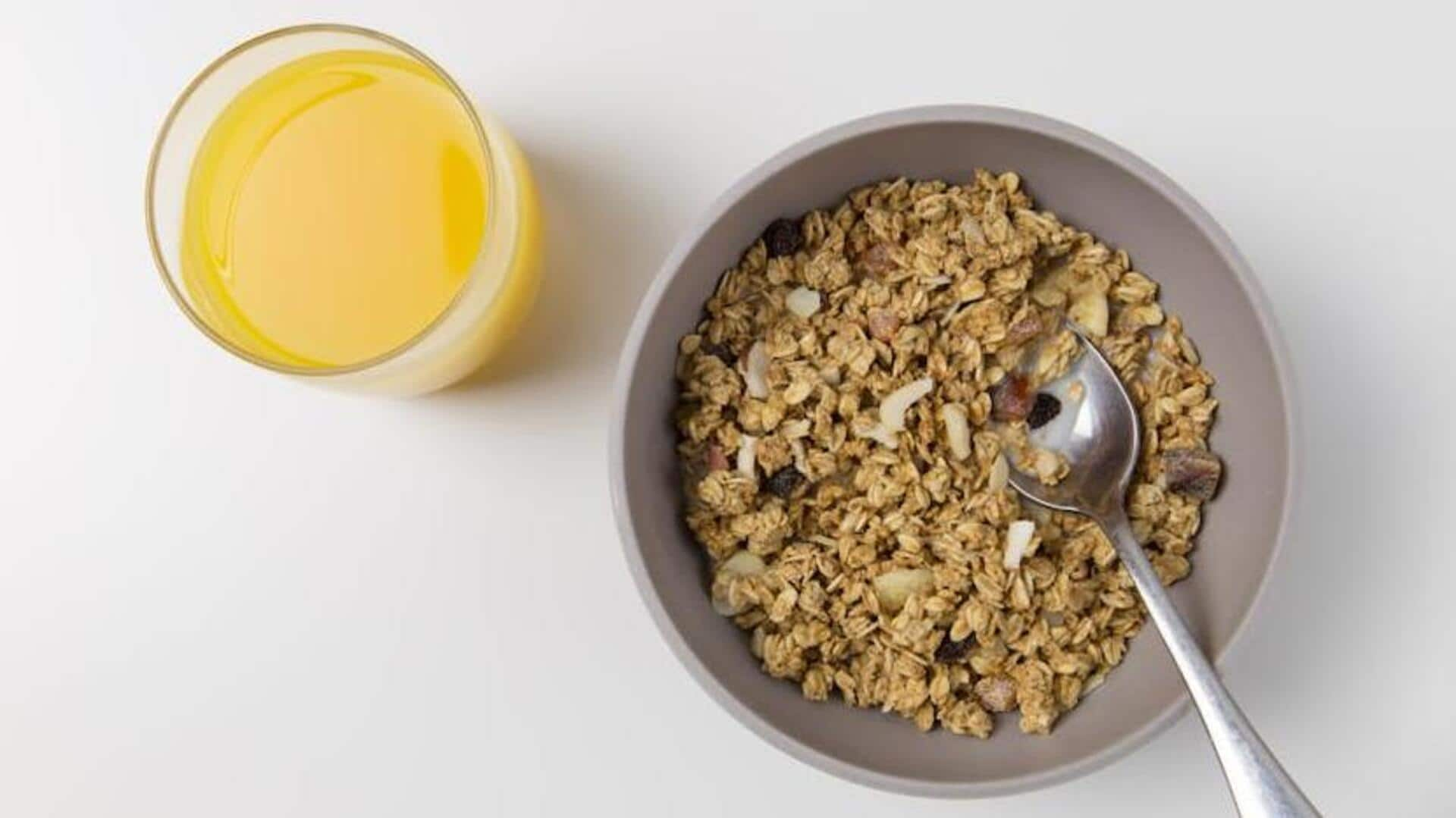Integrating a daily fiber-rich foods habit
What's the story
Adding fiber-rich foods to your everyday meals is crucial for good health.
Fiber not only assists in digestion but also helps regulate blood sugar levels, and even lowers the risk of heart disease.
Despite these benefits, most individuals find it challenging to reach the recommended daily fiber intake.
This article provides easy tips for incorporating more fiber-rich options into your meals, ensuring a balanced and nutritious diet without hassle.
Whole grains
Start with whole grains
Switching from refined to whole grains is an easy way to increase your fiber intake.
Opt for whole grains like brown rice, quinoa, oats, and whole wheat bread.
A single serving of these options can provide up to four grams of dietary fiber.
Start by substituting one refined grain meal per day with a whole grain alternative and gradually increase as you get accustomed to their flavors and textures.
Fruits & veggies
Incorporate more fruits and vegetables
Fruits and vegetables, loaded with vitamins, minerals, and dietary fiber, are crucial. Aim for a minimum of five servings per day.
Adding fruits to your breakfast or snacking on raw veggies can help you reach this goal.
Eating the skin of fruits like apples and pears provides additional fiber, boosting your intake without any extra effort.
Legumes
Add legumes to your diet
Legumes: Beans, lentils, chickpeas, and peas are excellent sources of both protein and fiber.
Adding legumes to your diet can significantly increase your daily fiber intake.
For instance, a single cup of cooked lentils provides approximately 15 grams of fiber.
You can incorporate legumes into salads, soups, or as a meat substitute in various dishes.
Snacking smart
Choose high-fiber snacks
Munching on high-fiber snacks all day is a smart strategy to hit that daily fiber target.
Choices like air-popped popcorn or almonds are not only deliciously satisfying but also pack a healthy punch of dietary fiber.
Having these snacks prepped and ready to go is a game-changer, saving you from reaching for less healthy options when you're in a snack-attack mode.
Label reading
Read food labels carefully
When buying packaged foods, always read labels to choose high-fiber options.
Look for foods labeled as "whole grain" or those that list ingredients like bran, which are high in dietary fiber.
Plus, many products now boast about their fiber content right on the packaging, so it's easier than ever to know what you're getting.
